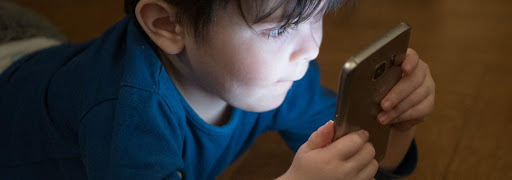Newsletter
Subscribe to stay updated on our latest news, upcoming workshops, training and special offers

Autism is a neurological and developmental condition that has an impact on how people connect with others, engage, learn, and conduct themselves. Children with ASD frequently struggle with social communication and engagement, as well as confined or repetitive habits or hobbies. Autism is thought to be a part of a spectrum. Because some people only experience a few, moderate symptoms, while others exhibit many, serious symptoms.
Behaviours can be challenging to control, appear unexpectedly, linger for hours. Working with children with autism requires parents or guardians to be equipped with a few tactics and ideas that will not only make their life simpler but also help their children succeed and receive the appropriate support. Here are some behavioural tactics to aid you:
Behaviour Strategies for Autistic Children
These behavioural strategies are intended to assist patients in controlling and altering particular habits, making it simpler to handle social barriers and prevent disruptions to learning. Consult a medical professional, or expert for assistance, if you believe that your child's condition is out of control. To receive the most support possible, book an appointment on "Hopscotch Child Therapy" today.
1.Set Expectations
Of course, being happy is the most basic goal that parents have for their kids. That should always be the purpose, but a successful goal-setting technique also includes quantifiable goals that you and your kid may work on together and separately. Realistic expectations involve considering the kid and establishing individualized processes and standards based on the requirements of that specific kid.
Set smart long-term and short-term objectives. A smart objective is time-bound, relevant, specified, quantifiable, and feasible. Just remember that even if you try your best, it is not your or your child's fault if things don't go as planned. Simply return to your normal schedule as soon as you can.

2.Offer Options
All kids especially those who have autism, prefer to feel in control of their surroundings. The number of choices should be between 2 and 4 (varying on the child), as many kids find it difficult to make decisions when they have too many options.
For instance, it should be OK to ask them if they would rather play a game than watch a movie or if they would prefer chocolate cake over vanilla cake. Overall, letting kids make decisions at home and school is advantageous for everyone involved and promotes motivation and commitment.
3.Make Timetable
Children with autism benefit greatly from predictable schedules and constant patterns. It is not suggested for them to vary their daily habits. Giving autistic kids a daily visual timetable and enforcing it can help them become more independent, better prepare for adjustments and what lies ahead in their day, and experience less anxiety and stress.
A schedule for the day can be "brushing teeth", "taking bath", "eating breakfast", "going to school", "doing homework", "playing video games", "reading books". "help with household chores", "eating a snack", "watching TV", and "going to bed".

4.Transition training
When activities, surroundings, or habits change or are disrupted, people with ASD might benefit from transition techniques. Moving from one place or activity to another can be challenging for kids with autism.
This is due to the inflexible thinking, difficulty following multi-step instructions and cognitive difficulties that some children with autism have, which allow them to perform particular tasks easily and independently. To make the shift even easier, consider providing early notice when a change occurs, use structure and regularity, and give modest praise for effective transitions to boost confidence.
5.Teach Calming Techniques
When autistic kids experience frustration, anxiety, or sensory overload, they need to learn coping mechanisms and ways to calm down. In moments of anxiety or sensory overload, providing the body and mind with both physical and emotional resources is crucial. Finding out which approaches will be useful and most advantageous for the child on the spectrum requires effective communication.
There are various kinds of coping mechanisms, and no single one will be effective for everybody. As an illustration, some kids stroll while listening to music, others perform deep breathing exercises, while yet others go outside and take in the scenery.
References:
https://www.winchesterhospital.org/health-library/article?id=892459
https://thespectrum.org.au/autism-strategy/autism-strategy-behaviour/
November 10, 2022

August 24, 2022

September 30, 2020
.jpg)
August 9, 2022